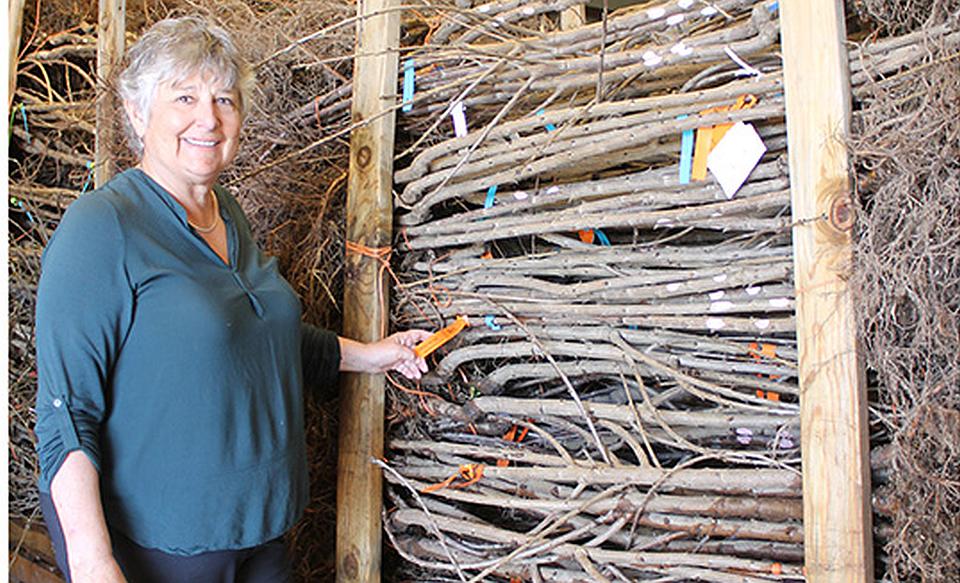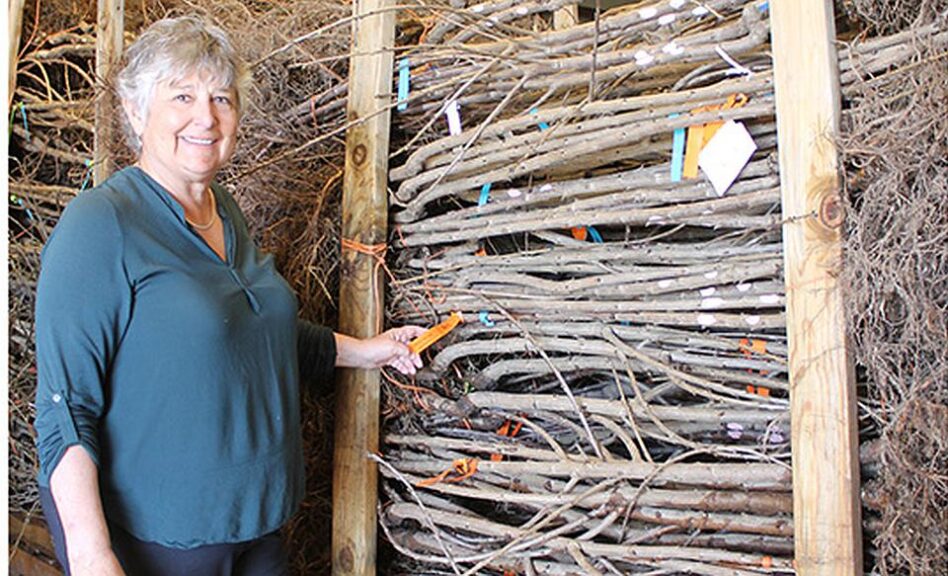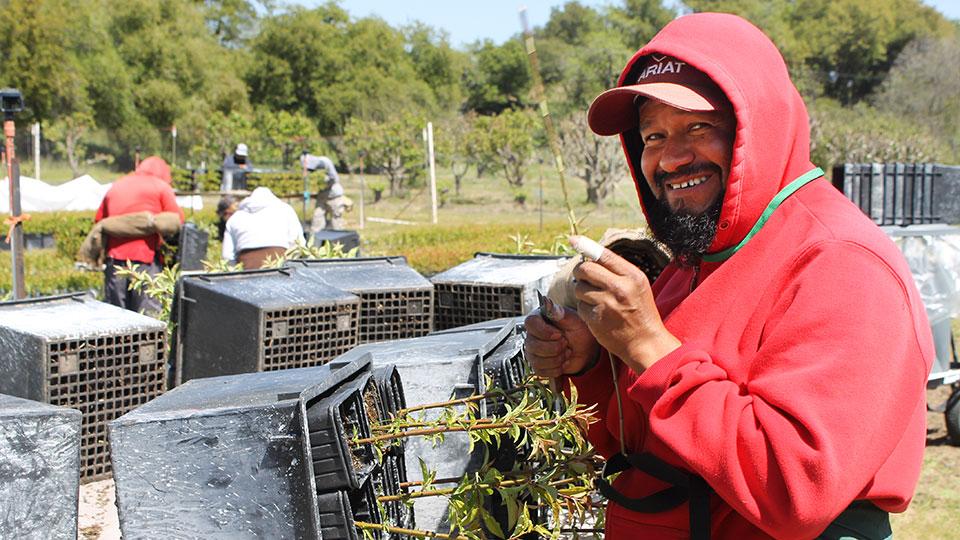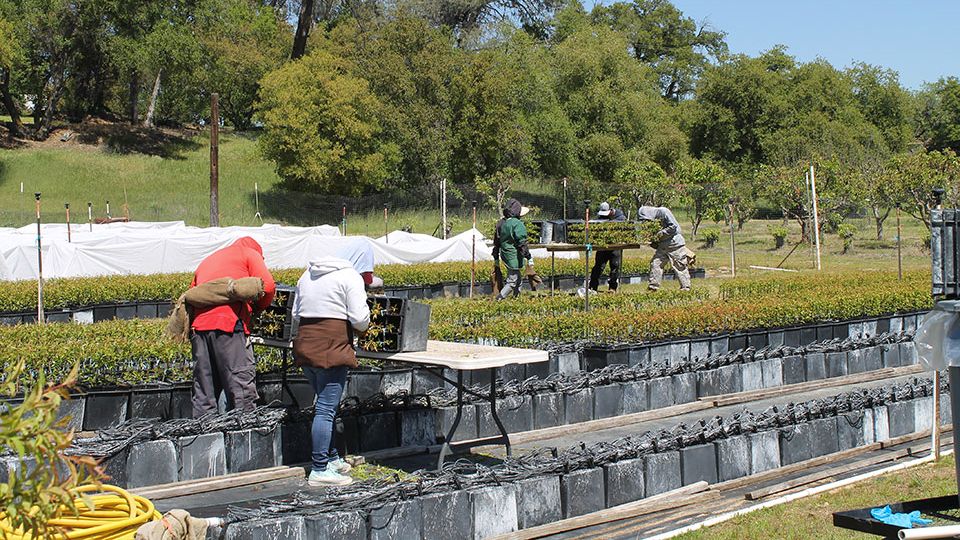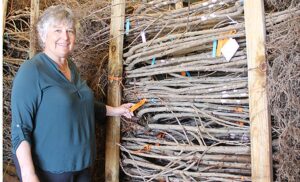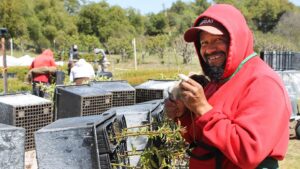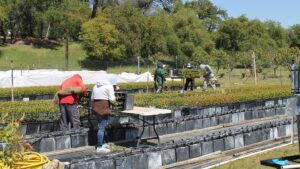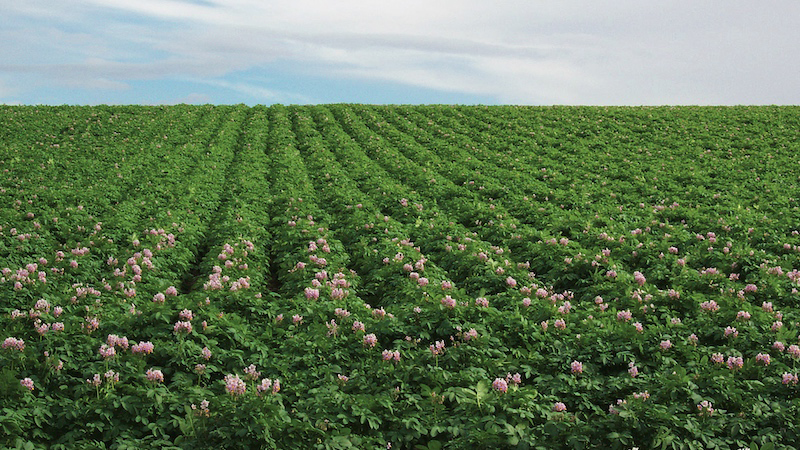Overabundance of Fruit Tree Rootstock Options a Growing Issue for Nurseries Today
It used to be so easy for fruit tree nurseries: Start with the most suitable rootstock, couple it with the proper variety, and, presto, the grower gets a superior tree … or two … or two-thousand-plus.
For more than a century, that has been the foundation for success at Fowler Nurseries in Newcastle, CA. The operation’s third-generation owner, Nancy Fowler-Johnson, inherited the philosophy from her dad, Bob Fowler, who had inherited it from his dad, “Grandpa” Gene. In turn, she now points her own children, Co-owners Denise Moore and Phillip Johnson, in that same direction.
“We wouldn’t be 111 years old as a company and be respected throughout the U.S. for the products we provide if we were doing it wrong,” Fowler-Johnson proudly notes.
There is only one problem for the Fowlers, and pretty much every reputable tree fruit nursery across the country: Doing the right thing — particularly in the eyes of their customers — is turning unattainable.
“You know, it never has been as tough as it is right now,” Fowler-Johnson says.
How tough?
“It’s like Russian roulette,” she says.
At the heart of the problem is choice. According to many nursery owners, there is simply too much of it these days.
IFTA TALKING POINT
Four nurserymen relayed their concerns over choice during a panel discussion at this year’s annual meeting of the International Fruit Tree Association (IFTA). Moderator Dale Goldy, the Owner of Gold Crown Nursery in Wenatchee, WA, opened the presentation by noting the ever-increasing amount of available rootstocks.
“We’re getting a fairly long list of rootstocks that we’re all trying to customize — customize to the site, customize to the variety,” he said. “We’re making some really significant changes in our choices of rootstocks, and the higher volume of rootstocks that is available is going to cause a lot of problems for us nurseries in trying to figure out what you guys need us to plant.
“Choice is great,” Goldy concluded, “but how do we deal with that as a nursery industry? Quite frankly, my crystal ball is getting pretty cracked.”
Todd Cameron, the Horticulturist at Cameron Nursery in Pasco, WA, illustrated that sentiment, noting the current revolution in availability led him to destroy 5-year-old beds last fall.
“They should have lasted 50 years,” he said. “So that churn is a little painful.”
Brent Smith, the Vice President at Treco Oregon Rootstock and Tree Co. in Woodburn, OR, emphasized the air of vagueness within the industry.
“There’s a lot of uncertainty as to which one combination is going to be the best combination to go with and having to tell the customer what to do just based off of stuff I hear from other customers or researchers,” he said. “And we’re also having to deal with the fact that sometimes the rootstocks don’t produce as advertised.”
Compounding the issue, some of those rootstock selections have a fair amount of crossover, according to Eric Haller, Vice President of Adams County Nursery in Aspers, PA.
“Understanding how that overlap works or does not work is creating just as much confusion as the fact we have so many choices to choose from,” he said. “Not to mention the fact they seem to be different in different growing regions, which is something that needs to be considered on a big level as well as many other things.”
BLIND FAITH
As President of Fowler Nurseries, Fowler-Johnson can relate to each of those concerns. The issue of new rootstock/variety overkill affects most of her inventory (almonds, plums, apricots, nectarines, peaches, and cherries) except Asian pears, she says.
“Some of this stuff is so new and so fast coming through the breeders,” she says. “Everybody wants it because they might hit that home run or that grand slam. So, they’re willing to take the chance, but then they want to blame everybody else if they strike out.”
Most of those fingers wind up being pointed at the nursery, according to Fowler-Johnson, who laments the amount of faith growers unjustly have in nurseries. They assume nurseries have done all the research; that they know everything about a variety/rootstalk combination; that they know exactly how that pairing is going to respond in every situation.
Based on those misperceptions, the growers eventually conclude, “It’s OK if I buy it,” Fowler-Johnson says, “even though we can explain to them that, no, this hasn’t been researched in every location, in every scenario. You are making the choices yourself and have done your due diligence to investigate the possibility of being profitable or not.
“We make no reference to productivity as we’re marketing these varieties. But the growers aren’t getting that. I think the apple industry has done maybe a better job of trying to explain some of that, because I think they’ve had more lawsuits on that than we have.”
Fowler Nurseries, which currently grows 500,000 almond trees a year, had conducted much of its own rootstock research more than two decades ago on behalf of the almond industry. Aiming to remedy deficiencies in the rootstocks available at that time, the operation set up trials in the Bakersfield, CA, area and then mid-state, and eventually in the northern part of California.
“We were trying to look at different rootstocks as to what might have better characteristics and productivity for growers. We figured it’s going to be a 10- or 15-year thing on rootstocks,” Fowler-Johnson says. “But you’re not seeing that research happening anymore on 10 or 15 years. If something new is here, or if somebody is taking a rootstock that’s already on the market and renaming it, maybe they did research on it? But they’re claiming that it’s so much superior.
“I know everybody’s clamoring for that next big thing that’s going to put them at the top of the heap, but, man, you gotta be careful. It’s scary right now.”
ADDITIONAL EXPERT ADVICE
What can be done to alleviate the problem? Four nursery officials offer suggestions:
Tom Burchell, President, Burchell Nursery, Oakdale, CA: “If the university or breeders can trial some test rootstocks early under test agreement with some on-farm test locations while the plants are going through the final patten or evaluation process, and the nurseries are informed, then, when the demand comes, the nurseries will be ready. Also, the nurseries need to have access to the plants at the on-farm location, where they can take cuttings and multiply them without having to plant all of the experimental rootstocks at the nursery.”
Peter Van Well, President, Van Well Nursery, Wenatchee, WA: “We are seeing some shifts to older, tried-and-true rootstocks. We are also hearing from growers who are figuring out how to work around issues with existing rootstocks. For example, we have growers who like BUD.9 because it does have fire blight protection, but the low vigor can create challenges with ‘runting out.’ Growers tell us they are patient and don’t harvest the fruit until the vegetative growth fills the space to make sure that tree is successful. So, in many cases, the market system works, and we try to make adjustments to make changes to accommodate what our growers need.”
Tyler Brandt, Vice President, Brandt’s Fruit Trees, Moxee, WA: “We, as far as nurseries go, need to communicate better with the other nurseries, so if there are issues with certain rootstocks, we need to steer away growers from making costly mistakes.”
Reid Robinson, CEO, Sierra Gold Nurseries, Davis, CA: “There are new technologies available both in rootstocks and in production methods, but it’s still just a nursery and the grower communicating well, and hopefully it’s seen as more of a partnership.”
As for Fowler-Johnson, she simply asks growers to ask questions of nursery officials, preferably onsite.
“We never see growers. They never come to see the trees. They never ask us a lot of questions. They just call, and they order trees,” she says. “We are probably one of the biggest industries that has faith in what’s going on. But you still need to do your research.”





